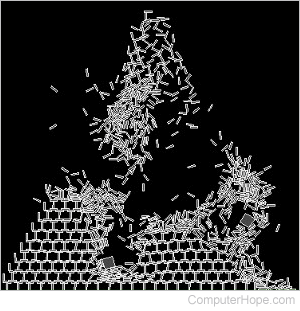Physics engine

A physics engine describes software used to simulate physical phenomena. The first physics engines were used in military simulations, predicting where artillery shells would land. These engines factored in the shells' weights, forces, and trajectories to simulate the result. Since then, they are employed in the design of aircraft, watercraft, and land vehicles.
In computer video games, physics engines enhance the player's enjoyment by simulating the complex physical characteristics of a virtual world. Unlike scientific physics engines, video games engines use an approximation of real-world physics to quickly simulate complex world interactions, in real-time, computed on the computer's GPU (graphics processing unit).
Examples of physics engines
Physics engines employed in video games include:
- Ragdoll physics simulate the interaction of a physical body with its geometric environment. For example, to show a zombie falling down a flight of stairs, an engine might calculate the collision and motion of each limb and stair. Instead of being animated beforehand, each motion of the zombie's body would be uniquely computed in real-time.
- Particle physics simulate the motion of many small, similar things emitted from a common source. Examples of particle physics include shrapnel from a bomb, sparks from a power line, or lava erupting from a volcano. In the case of a liquid, such as lava, the physics engine may also compute fluid dynamics.
- Cloth modeling simulates the realistic motion of cloth, such as a shirt, cape, or flag.
